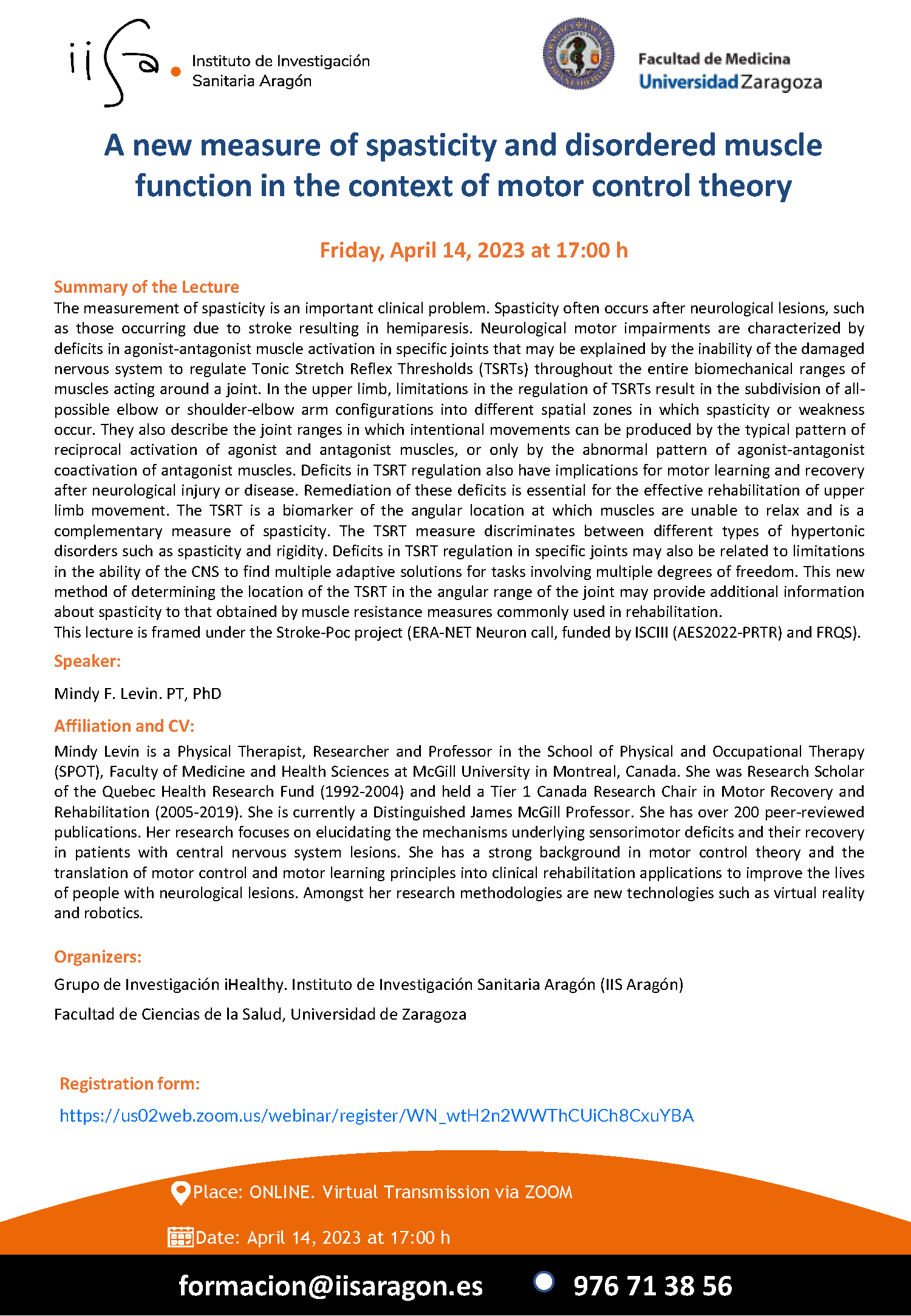Seminario Biomédico: «A new measure of spasticity and disordered muscle function in the context of motor control theory»

- Este evento ha pasado.
Seminario Biomédico: «A new measure of spasticity and disordered muscle function in the context of motor control theory»
14 abril, 2023 @ 5:00 pm - 6:30 pm

El Instituto de Investigación Sanitaria Aragón en colaboración con la Universidad de Zaragoza organizan el 14 de abril 2023 el Seminario Biomédico «A new measure of spasticity and disordered muscle function in the context of motor control theory».
The measurement of spasticity is an important clinical problem. Spasticity often occurs after neurological lesions, such as those occurring due to stroke resulting in hemiparesis. Neurological motor impairments are characterized by deficits in agonist-antagonist muscle activation in specific joints that may be explained by the inability of the damaged nervous system to regulate Tonic Stretch Reflex Thresholds (TSRTs) throughout the entire biomechanical ranges of muscles acting around a joint. In the upper limb, limitations in the regulation of TSRTs result in the subdivision of all-possible elbow or shoulder-elbow arm configurations into different spatial zones in which spasticity or weakness occur. They also describe the joint ranges in which intentional movements can be produced by the typical pattern of reciprocal activation of agonist and antagonist muscles, or only by the abnormal pattern of agonist-antagonist coactivation of antagonist muscles. Deficits in TSRT regulation also have implications for motor learning and recovery after neurological injury or disease. Remediation of these deficits is essential for the effective rehabilitation of upper limb movement. The TSRT is a biomarker of the angular location at which muscles are unable to relax and is a complementary measure of spasticity. The TSRT measure discriminates between different types of hypertonic disorders such as spasticity and rigidity. Deficits in TSRT regulation in specific joints may also be related to limitations in the ability of the CNS to find multiple adaptive solutions for tasks involving multiple degrees of freedom. This new method of determining the location of the TSRT in the angular range of the joint may provide additional information about spasticity to that obtained by muscle resistance measures commonly used in rehabilitation.
This lecture is framed under the Stroke-Poc project (ERA-NET Neuron call, funded by ISCIII (AES2022-PRTR) and FRQS)

